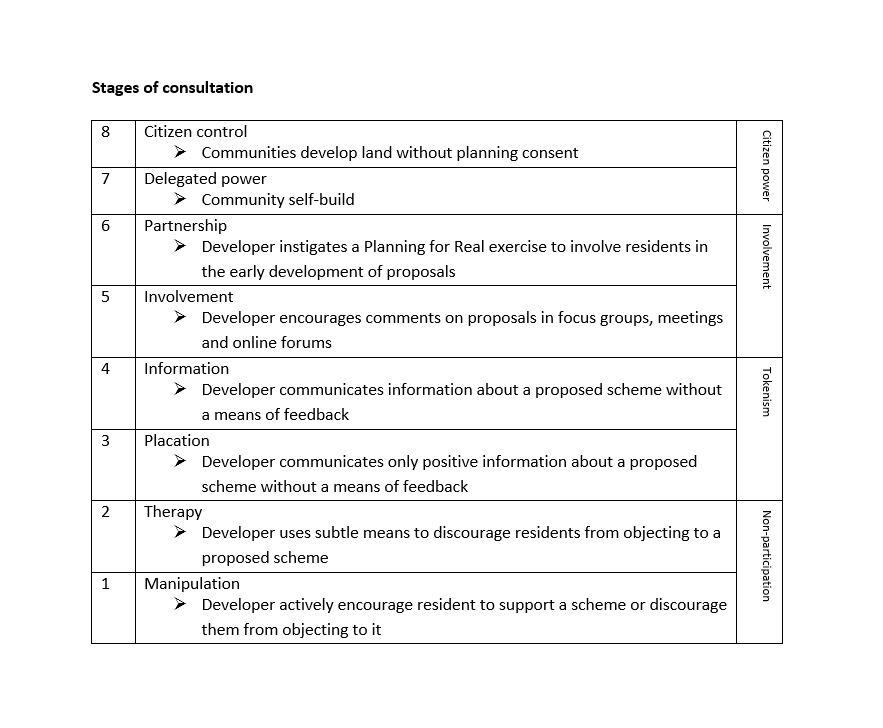In 1969 the US communications academic Sherry Arnstein identified the terminology of consultation in her Ladder of Participation. In some respects, Arnstein’s theory is a useful resource by which community involvement can be considered today.

Arnstein’s Ladder was intended to reflect the relationship between community and government, identifying poorly-led participation as ‘manipulation’ on the bottom rung of the ladder and rising to ‘citizen control’ at the very top.
My first reflection on this, along with many other consultation professionals, is that ‘consultation’ is rarely ‘tokenism’.
Consultation, according to the UK’s Consultation Institute, consultation is:
The dynamic process of dialogue between individuals or groups, based upon a genuine exchange of views, with the objective of influencing decisions policies or programmes of action.
It is dialogue, it is two way, and it seeks to gain feedback in order to inform decisions.
Furthermore, I think that most developers quite justifiably choose to ignore the top two rungs of the ladder – the best consultations are a partnership between a developer and the community, not a relinquishing of control to the community.
I also suggest alternating the positions of consultation and placation, thereby positioning consultation at the centre of the ladder, representing a process which involves local people and government / organisations equally. Ideally the fifth rung would be divided further to reflect the fact that consultation itself has many forms as shown below:

This, I hope provides a more up-to-date framework by which consultations can be considered.
Extract from Public Consultation and Community Involvement in Planning: a twenty-first century guide.
Penny Norton’s third book Communicating Construction: insight, experience and best practice contains some of the most recent thinking on consultation and will be published in early 2021.
Find out more about our community relations and consultation services.